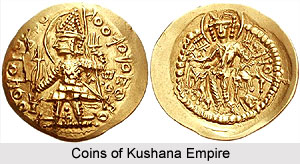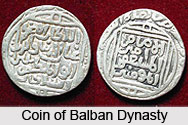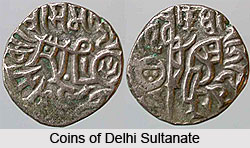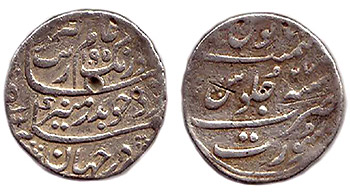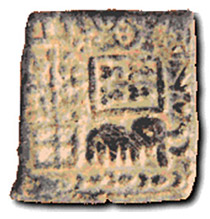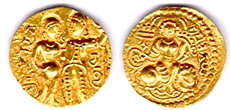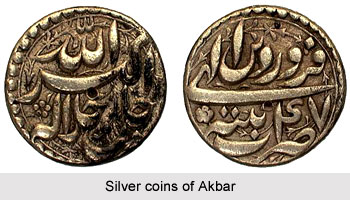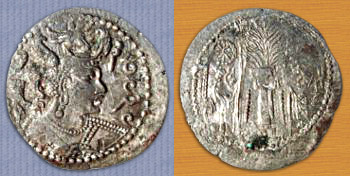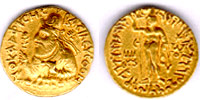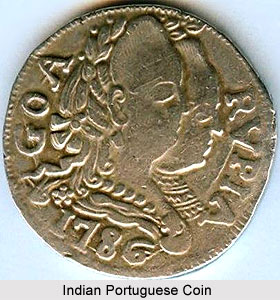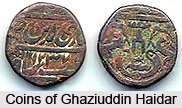 The British ruled India with two administrative systems. One was `Provinces` and the other `Princely States`. About 60% of the Indian subcontinent`s territories were Provinces and 40% were Princely States. Provinces were British territories completely under British control. Princely States were states in British India with local ruler or king with honorary titles like Maharaja, Raja, Maharana, Rana, Nizam, Badshah and other such titles meaning king or ruler in different Indian languages. These rulers were subjected to the British Empire. These two types of administrative systems were the result of the British East India Company`s attempt to annex the whole of Indian sub-continent and make it into a British territory.
The British ruled India with two administrative systems. One was `Provinces` and the other `Princely States`. About 60% of the Indian subcontinent`s territories were Provinces and 40% were Princely States. Provinces were British territories completely under British control. Princely States were states in British India with local ruler or king with honorary titles like Maharaja, Raja, Maharana, Rana, Nizam, Badshah and other such titles meaning king or ruler in different Indian languages. These rulers were subjected to the British Empire. These two types of administrative systems were the result of the British East India Company`s attempt to annex the whole of Indian sub-continent and make it into a British territory.
Until 1947/48, the complex political map of India (including Pakistan and Bangladesh) included over 650 quasi-independent Indian Princely States. The habitual terminology of "Princely States" is significantly flawed. "Princes" did not rule these states" but rather by "kings," some of whom enjoyed a truly ancient heritage of political power. For the British -- and their ideology of imperialism -- there was but one significant "king" (and he lived in London); Indian rulers were (and had to be) "princes."
Along with the Princely States there were also 11 Provinces in British India. These Provinces were under direct British control. These Provinces were formerly Indian entities, which the British annexed from the Indian rulers, attached them together and turned them into British Provinces. Among these Provinces were Bombay, Madras, Bengal, Assam and United Provinces.
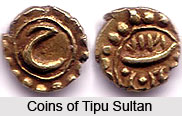
Until around 1947 many parts of India had their own separate coinages too. These regions were run as Princely States and coins from around twenty of these fit into my collecting criteria. The Princely States with more abundant coinages are such as Hyderabad, Jaipur, Kutch and Travancore.
The fertile and prosperous land of Awadh in Northern India, today`s modern Uttar Pradesh, was governed by Nawab-Wazirs on behalf of the Mughal Emperor from around 1720 AD. With the decline of the Mughal Empire, the British Governor General, the Marquis of Hastings, persuaded Ghaziuddin Haidar, the Nawab-Wazir of Awadh, to cast off Mughal suzerainty and declare himself independent. Ghaziuddin was crowned in 1819, but the State of Awadh whose capital Lucknow, lay claimed the title of the cultural capital of India, did not survive even four decades. Despite Ghaziuddin`s proclamation of independence, the first issues continued in the name of the Mughal Emperor, with the Awadh coat of arms on the reverse, before independent coins were issued. The coat of arms was imitative of the English and marked a departure from the traditional Mughal designs. Nasiruddin Hyder, Muhammed Ali, and Wajid Ali succeeded Ghaziuddin. The monetary system consisted of the gold ashrafi, (half, quarter, eighth and sixteenth of an ashrafi), the silver rupee with similar five denominations and the copper fulus. The defeat of the Nawab of Awadh at the Battle of Buxar (1764), precipitated the decline of the Kingdom. The silver rupee minted by Nabab Amjad ali Shah has a fish above which royal crown is shown. Two swords are around the crown and royal canopy. Wajid Ali Shah, the last Nawab was forced to abdicate in 1856 by Lord Dalhousie. During the 1857 uprising, the battle of Lucknow was one of the most bitterly fought battles. The revolutionaries are said to have minted coins in the name of the Nawab-Wazarat.
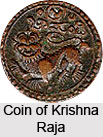 The Kingdom of Mysore was situated in Southwest India and was ruled by various Hindu dynasties. In 1761, Haider Ali a military adventurer deposed the Wodeyar ruler and proclaimed himself King. In the region, coins of both the Mughal and Vijayanagar standards were current. His coin issues coins of the pagoda types continued to carry the motifs and iconographic forms of the Vijayanagar period (e.g., Hara-Gauri) with his initial, the letter `He` on the reverse. Tipu, his son, succeed him and assumed the title of Sultan. Tipu minted very interesting coins, most of which had elephant on obverse. Elephant was royal symbol of this dynasty. His most popular coin is a heavy silver coin called `double Rupee`. He introduced various innovations and new varieties in his coinage, continuing with the pagodas, the mohurs, and introduced his own standards. An interesting feature of his coins is that they do not bear his name. Tipu Sultan, a progressive ruler, was one of the few Indian princes to perceive the imperial designs of the British and oppose them; he, however, was slain in the battle of Srirangpatanam in 1799 after which the British reinstated Krishna Raja Wodeyar as King of Mysore. Krishna Raja Wodeyar continued to issue coins of the Vijayanagar and Mughal standards. The gold coins carried the Hara-Gauri motif and the King`s name on the reverse.
The silver coins were in the Mughal tradition, bearing the name of the Mughal Emperor, Shah Alam II on the obverse and the name of the mint on the reverse. Some of the smaller fraction coins carried the image of the deity Chamunda, the family deity of the Wodeyar family; other coins carried motifs drawn from nature and inscriptions in Nagri, Persian, Kannada, and English at various points of time. Wodeyar kings especially Krishana Raja Wodeyar were able rulers and made Mysore as one the best princely state of India by 20th century. The coins issued by King`s Dewan (prime minister) Purnaiya on behalf of King, shows a Shardula, a mythical tiger.
The Kingdom of Mysore was situated in Southwest India and was ruled by various Hindu dynasties. In 1761, Haider Ali a military adventurer deposed the Wodeyar ruler and proclaimed himself King. In the region, coins of both the Mughal and Vijayanagar standards were current. His coin issues coins of the pagoda types continued to carry the motifs and iconographic forms of the Vijayanagar period (e.g., Hara-Gauri) with his initial, the letter `He` on the reverse. Tipu, his son, succeed him and assumed the title of Sultan. Tipu minted very interesting coins, most of which had elephant on obverse. Elephant was royal symbol of this dynasty. His most popular coin is a heavy silver coin called `double Rupee`. He introduced various innovations and new varieties in his coinage, continuing with the pagodas, the mohurs, and introduced his own standards. An interesting feature of his coins is that they do not bear his name. Tipu Sultan, a progressive ruler, was one of the few Indian princes to perceive the imperial designs of the British and oppose them; he, however, was slain in the battle of Srirangpatanam in 1799 after which the British reinstated Krishna Raja Wodeyar as King of Mysore. Krishna Raja Wodeyar continued to issue coins of the Vijayanagar and Mughal standards. The gold coins carried the Hara-Gauri motif and the King`s name on the reverse.
The silver coins were in the Mughal tradition, bearing the name of the Mughal Emperor, Shah Alam II on the obverse and the name of the mint on the reverse. Some of the smaller fraction coins carried the image of the deity Chamunda, the family deity of the Wodeyar family; other coins carried motifs drawn from nature and inscriptions in Nagri, Persian, Kannada, and English at various points of time. Wodeyar kings especially Krishana Raja Wodeyar were able rulers and made Mysore as one the best princely state of India by 20th century. The coins issued by King`s Dewan (prime minister) Purnaiya on behalf of King, shows a Shardula, a mythical tiger.
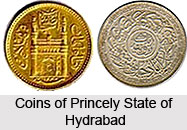 In the Princely State of Hydrabad, in matters of currency and coinage, the coins of the Nizams were issued in the name of the Mughal Emperor till 1858 when a coin legend was introduced with the name of the founder of the state, Asaf Jha. Thereafter, they were struck independently and the new coins were termed the `Hali Sicca`, i.e., the current coins. In 1903-04 coins were machine struck for the first time. These coins featured the Charminar on the obverse with Persian inscription Nizam-ul-mulk Bahadur Asaf Jah around it. The reverse carried the value. These coins confirmed to the British coins in denominations and metals.
In the Princely State of Hydrabad, in matters of currency and coinage, the coins of the Nizams were issued in the name of the Mughal Emperor till 1858 when a coin legend was introduced with the name of the founder of the state, Asaf Jha. Thereafter, they were struck independently and the new coins were termed the `Hali Sicca`, i.e., the current coins. In 1903-04 coins were machine struck for the first time. These coins featured the Charminar on the obverse with Persian inscription Nizam-ul-mulk Bahadur Asaf Jah around it. The reverse carried the value. These coins confirmed to the British coins in denominations and metals.
Puduakkottai, a small princly state like all other princely state eventually merged in Republic of India in 1947, issued a number of copper coins, weighing approximately 1.2 grams each.
